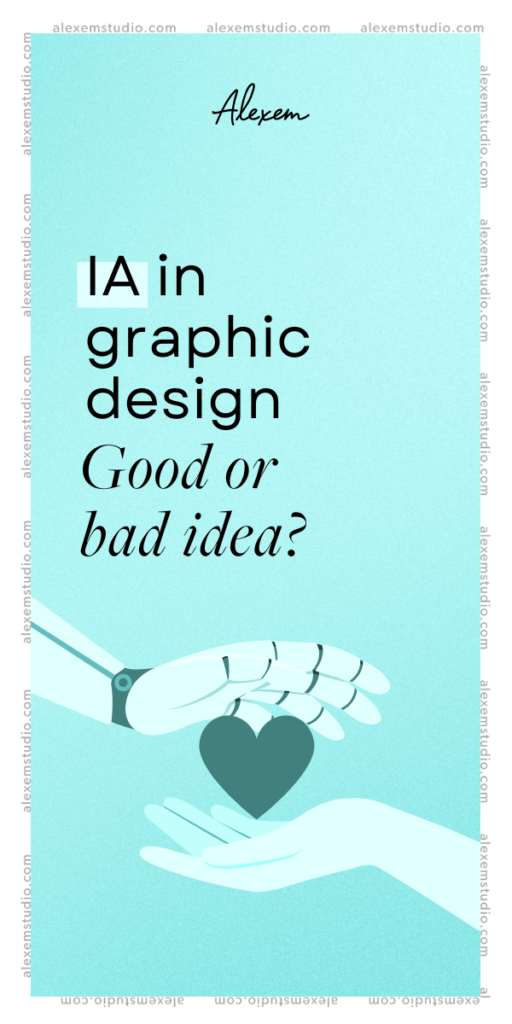Unless you’re a recluse living on a desert island, you’ve probably noticed the increasingly important role played byartificial intelligence in our daily lives. Image generator, language corrector, translator, music creator, image recognition… Whether it’s that cute video you shared or the profile photo of your match on a dating app, chances are AI has something to do with it.
While AI can be scary and threatening for many designers, at Alexem Studio we prefer to see it as an almost infinite resource of tools that can simplify, organize or automate complex tasks, and therefore give you more bang for your buck. Dive into the fascinating world of artificial intelligence.
What is AI?
Artificial intelligence (AI) is the ability of certain technologies – such as software or machines – to imitate human behaviors such as learning, analyzing, understanding or creating.
In concrete terms, this is what enables a computer to recognize an image, answer a question, generate text or even make personalized suggestions – much like a human would, but in an automated way.
Why is AI scary?
The idea that a machine can imitate human behavior can be uncomfortable, even worrying for some. In the field of design, it’s sometimes disorientating to see an AI generate images, content and much more. These are things that normally require time, expertise and concentration on the part of a human being.
So, if AI is capable of producing what we create manually, why continue to do business with real designers?
The importance of people
Impressive as it is, AI is not infallible. It still often makes mistakes.
Take image generation, for example: you first need to provide a very precise description of what you want to achieve. And even then, theAI often has trouble grasping certain details or interpreting the request correctly. Hands, for example, are still very difficult to generate correctly. So you need a human presence to validate what is being produced. In 99% of cases, it’s up to us designers to finalize the image with good old-fashioned software like Photoshop.
On the copywriting side, tools like ChatGPT can produce useful, well-structured texts. But human proofreading remains essential: to correct mistakes, check the accuracy of the information and adapt the tone to the brand. AI can help, but it’s no substitute for human sensitivity.
In short, however powerful they may be, AIs are not yet(and thankfully!) creating perfect content.
How does Alexem use AI?
At Alexem Studio, we’re curious and we like to explore. AI is part of our daily tools, not to replace our work, but to improve it – whether in terms of speed, quality or learning.
Image generation with Adobe Firefly
Not all our customers have access to a large image bank. And creating realistic, high-quality visuals can quickly become a costly affair. This is where AI comes in handy. With Adobe Firefly, we generate images which we then retouch to meet the visual standards of each project. The result: personalized visuals that are accessible to all budgets.
Copywriting and content adaptation
Some customers already have a good base of content for their website or social media. We use ChatGPT to explore their domain, generate ideas or draft texts. Then we revise, rephrase and adjust the tone. And above all, we validate everything.
Structuring our work
ChatGPT also helps us quickly organize large quantities of information, such as lists of products, contacts or employee profiles. It can generate structured tables that can be easily copied and pasted into WP Sheet Editor, a WordPress tool for managing site content in an Excel-like interface. This saves time and reduces errors associated with manual data entry.
Our final opinion
At Alexem, we’ve chosen to see AI as a tool that complements our know-how. It helps us to move faster, explore new ideas and deliver even more value to our customers – without ever replacing our eye, our intuition, our rigor.
The heart of our work remains profoundly human. It’s our ideas, our thoughts and our attention to detail that make the difference. And as long as your projects continue to inspire us, graphic design will remain alive and well.

